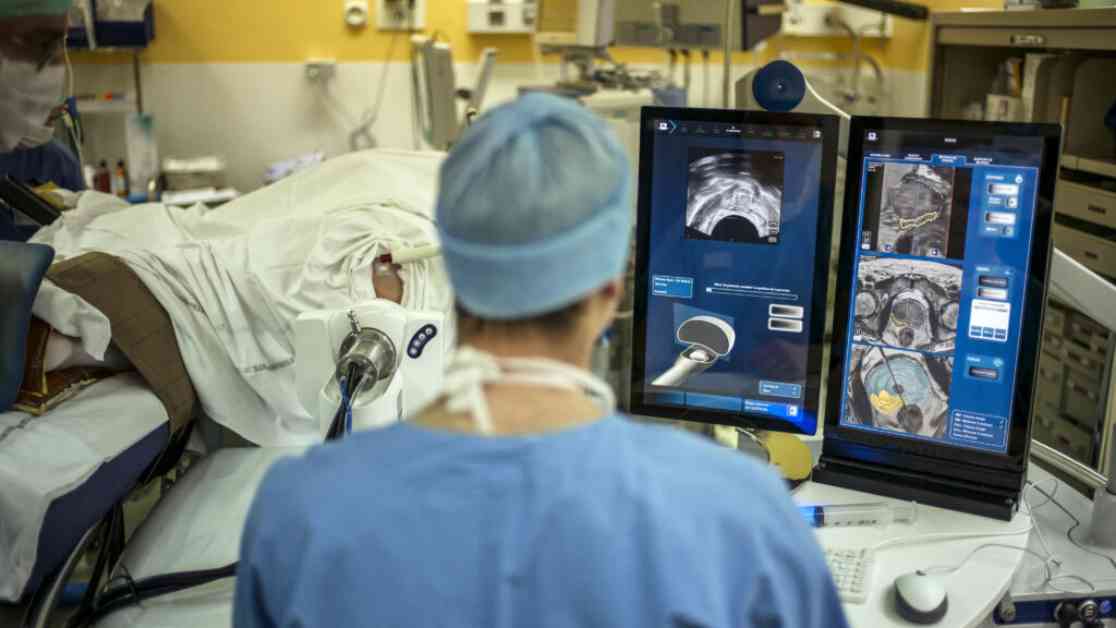Benefits and Risks of Prostate Cancer Screening
Prostate cancer screening has long been a controversial topic in the medical community. While early detection can potentially save lives by catching aggressive tumors before they spread, it also runs the risk of overdiagnosis and overtreatment of slow-growing, indolent tumors that may never cause harm to the patient. This delicate balance has led to heated debates among experts, with some arguing that the harms of screening outweigh the benefits, while others advocate for the potential lives saved through early detection.
The Role of MRI in Prostate Cancer Screening
Recent advancements in medical imaging technology, particularly the use of MRI scans, have shown promise in improving the benefits of prostate cancer screening while reducing the associated risks. A study published in the New England Journal of Medicine demonstrated that using MRI scans as part of the screening process could significantly decrease the unnecessary diagnosis and treatment of screen-detected prostate cancer by more than half. This finding has led researchers and physicians to reconsider current prostate cancer screening guidelines with MRI in mind.
According to Jonas Hugosson, a professor of urology at the University of Gothenburg in Sweden and the lead author of the study, incorporating MRI scans into prostate cancer screening may be the final piece of the puzzle in establishing real evidence that the benefits of screening outweigh the harms on a population level. Hugosson emphasized the importance of this study as a message to healthcare authorities worldwide to reevaluate recommendations for men undergoing prostate cancer screening.
Challenges and Feasibility of Implementing MRI Screening
While the potential benefits of using MRI in prostate cancer screening are clear, there are challenges to implementing this approach on a broader scale. One major obstacle is the lack of sufficient MRI infrastructure to support a screening program that requires extensive scans. Currently, only a third of patients in urban areas receive MRI before a prostate biopsy, with even fewer in rural areas, highlighting the disparities in access to this technology.
Urologists and genitourinary oncologists have been advocating for MRI before biopsy as part of prostate screening, but the limited availability of MRI scanners poses a significant barrier to widespread adoption. Additionally, performing high-quality prostate imaging on MRI machines requires specialized expertise, both in conducting the scans and interpreting the results. Efforts are underway to streamline the process by developing standardized imaging protocols and utilizing artificial intelligence for image analysis, but more work is needed to make MRI screening more accessible and efficient.
Impact of MRI-Targeted Biopsies on Prostate Cancer Detection
The NEJM study conducted by Hugosson and his team in Sweden enrolled over 13,000 men to evaluate the effectiveness of targeted biopsies based on MRI results in prostate cancer screening. The results showed that men who underwent targeted biopsies only when a lesion was visible on MRI experienced significantly fewer unnecessary biopsies and diagnoses of clinically insignificant cancers. By reducing the frequency of biopsies and overdiagnosis rates, the targeted biopsy approach demonstrated its value in improving the accuracy of prostate cancer detection.
One of the key findings of the study was the absence of a statistically significant increase in advanced or incurable cancers among men who underwent biopsies only when warranted by MRI findings. This suggests that the targeted biopsy strategy can effectively identify clinically significant cancers while minimizing the detection of insignificant tumors. While some cases of advanced cancer may still go undetected, the overall reduction in overdiagnosis and overtreatment represents a significant advancement in prostate cancer screening.
Overall, the study’s findings support the use of MRI-targeted biopsies as a more precise and efficient approach to prostate cancer screening. By focusing on suspicious lesions identified through MRI scans, healthcare providers can improve the accuracy of cancer detection while minimizing unnecessary procedures and potential harms to patients. As researchers continue to refine and expand upon this strategy, the future of prostate cancer screening may be reshaped by the integration of advanced imaging technologies like MRI.

















